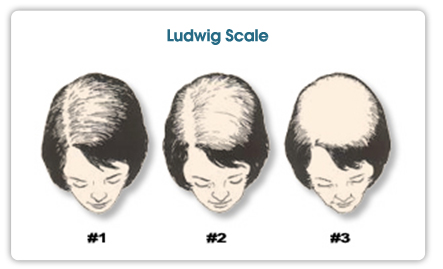Females are naturally more concerned about their appearance and easily feel upset with excessive hair loss. Yet, the attention of the media seems to be centered largely on men, leaving most females badly in need of information about hair loss.
In contrast to men, females have more varied reasons for hair loss leading to huge psychological burdens and influences on self-image. According to surveys conducted in foreign countries, hair loss usually occurs in women over the age of 50. Yet, there are exceptions. Your doctor will make the diagnosis after careful clinical examinations, tests and a thorough scrutiny of histories in hair loss among your family.
Generally speaking, potential causes for female hair loss can be divided into several major categories. Some of them have permanent effects while some are just temporary in influence. Women typically experience a somewhat less noticeable hair loss pattern than men, so when the situation becomes conspicuous, it is advisable to seek medical opinions immediately.
1. Female Pattern Hair Loss
In contrast to men, crown and temporal baldness are less evident among women. However, females often experience extensive thinning of hair. Actually, there are some male hormones in female bodies to regulate their hair growth. When the follicles in the scalp come into contact with DHT, a type of male hormone, the activities of the follicles will be retarded and hair growth will enter a telogen phase. Hair becomes thin and follicles start to miniaturize until new hair ceases to grow out. Sufferers of female pattern hair loss may not be having excessive male hormone secretion or endocrine disorders. Instead, most of them have normal menstrual cycles. Women experiencing massive hair loss and irregular periods at the same time should figure out the causes through necessary body checks. If a senior member in one’s family have had hair falling problems, one runs higher risks of suffering form female pattern hair loss. Yet, the extent of genetic influence varies from case to case and it is difficult to ascertain one’s chances of having falling hair just by observing parents’ and relatives’ hair conditions.
2. Alopecia Areata
This is a kind of autoimmune diseases, leading to formation of bald patches in the shape and size of small coins. There are no special signs and the bald patches are not caused by physical injuries. Though most commonly found in children and youngsters, its occurrence is not limited to age and sex.
3. Telogen Effluvium
Active follicles suddenly enter into the telogen phase, resulting in massive hair loss. There are a variety of causes, such as childbirth, malnutrition, serious illness and receiving major surgery, influence of drugs, as well as psychological traumas. Massive hair loss usually occurs 3-4 months after the “trigger”.
4. Cicatricial Alopecia / Scarring Alopecia
When the scalp and follicles are damaged permanently by physical injuries or infectious diseases, hair will cease to grow in the affected areas. Scarring Alopecia is often caused by external injuries, radiation therapy and autoimmune diseases such as Systemic Lupus Erythematosus.
5. Traction Alopecia
Prolonged hair pulling by using perm rollers, headbands and hairpins may cause hair near the periphery and the hairline to become brittle.
6. Trichotilomania
This is a compulsive act usually caused by stress. People with Trichotilomania feel repeated urge to pull out their hair. This disorder is more commonly found among females and children, rather than men and adults.
7. Various Illness
This is a compulsive act usually caused by stress. People with Trichotilomania feel repeated urge to pull out their hair. This disorder is more commonly found among females and children, rather than men and adults.

